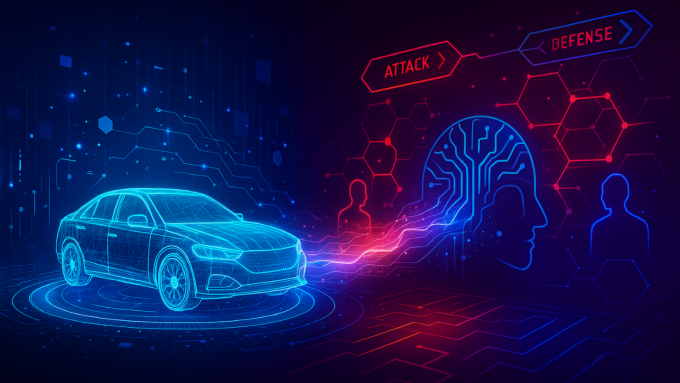Why this session hit a nerve
Most digital twin talks live at the shiny end of the spectrum: slick dashboards, gorgeous simulations, “autonomous” control. Yuan took a different route—zooming into the stubborn, everyday gaps that make or break value: how we capture, align and afford the data that feeds a spatial twin. The conversation anchored on Levels 1–2 of a common five-level maturity model (from 3D replica → contextualised data → analytics → simulation-led decision support → autonomy). The hype swirls around Levels 3–5; the pain—and the opportunity—often sits earlier. Gemini Call by the Digital Twin…
Hiverlab in a sentence
Founded in 2014, Hiverlab builds spatial intelligence solutions for logistics, manufacturing, the built environment, smart cities, healthcare and critical infrastructure, serving hundreds of customers across 20+ countries. Its Spatial Work platform is designed to carry users from level-1 3D content to level-5 operational control, with a 3D media library and data-dashboard integration.
2) How organisations are actually capturing data today
3D baselines: four common starting points (often combined)
- GIS / satellite & aerial sources. Fastest way to get geospatial context (terrain, parcels, orthoimagery) when you don’t yet have an asset model. Good for campus- or city-scale twins. Gemini Call by the Digital Twin…
- Technical models / BIM. Where BIM already exists (plants, depots, buildings), teams reuse it as the initial 3D scene; where it doesn’t, they may target scan-to-mesh/pipe rather than full BIM for speed.
- Laser scanning / reality capture. Essential for brownfield sites that are live and lack up-to-date drawings—capture, register, then decimate to a performance-friendly mesh for the twin. Gemini Call by the Digital Twin…
- AI-assisted 3D (e.g., Gaussian splatting). Rapid 3D from 2D imagery for walkthrough-quality context; caveat: any areas not photographed are AI-inferred, so treat as approximate until verified. Gemini Call by the Digital Twin…
Selection tip: pick the lightest method that answers your near-term questions, then enrich only where the business case demands—teams often blend a coarse city model with high-fidelity scans at critical hotspots. (Recommendation)
Operational signals: wiring the live data fabric
- Meters & environmental sensing. Electricity/water meters and IAQ sensors feed utilisation, comfort and sustainability KPIs into the scene. Gemini Call by the Digital Twin…
- Cameras (often with existing VA). Many sites already run third-party video analytics; the twin becomes the integration & visualisation layer rather than duplicating VA capability. Gemini Call by the Digital Twin…
- Logistics/manufacturing data. Barcode systems, printers and edge devices stream events; enterprise systems—WMS/AMS/EMS—round out the operational picture once spatialised. Gemini Call by the Digital Twin…
Integration gotcha to plan for: non-spatial systems need an XYZ conversion layer so assets, orders and alarms “land” at the right place in 3D. Hiverlab’s Spatial Work explicitly targets that bridge. Gemini Call by the Digital Twin…
When data is missing: simulate a baseline
Before instrumentation or data-sharing agreements exist, teams may run simulations to generate baseline parameters for analysis—useful for exploring multi-parameter trade-offs at L4. Expect steep learning curves and, at times, stitching outputs from multiple simulators.
Practical guardrails: document what’s simulated vs. measured; tag simulated layers in the UI; set expiry dates to force replacement with measured data as sensors come online. (Recommendation)
Two concrete fixes from the field
A) Echo — ultra-low-cost vibration + location sensing at scale
Customer context. A global apparel manufacturer operating thousands of sewing machines needed real-time location (for line reconfiguration) and vibration/health (for preventive maintenance). Off-the-shelf vibration/location sensors were too expensive at this scale. Gemini Call by the Digital Twin…
What Hiverlab built.
- A custom Echo IoT device with a Hiverlab-designed PCB, pushed to mass production.
- A data strategy that compresses the payload, cutting device and transmission costs while preserving the health signals needed by the twin. Gemini Call by the Digital Twin…
Data flow (conceptual): Echo (edge sampling, compression) → gateway → twin backend → 3D scene overlays (machine icon position + vibration status) → ops dashboards for resource coordination and maintenance. Gemini Call by the Digital Twin…
Outcomes reported.
- Real-time asset location across the floor; planners see where each machine sits and can reconfigure lines faster.
- Fleet-level condition insight from vibration profiles enables preventive analysis instead of reactive fixes. Gemini Call by the Digital Twin…
Rollout playbook you can reuse (recommendations):
- Start with 1–2 golden lines; benchmark time-to-reconfigure and first-fix rates pre/post.
- Define a minimal telemetry schema (e.g., device_id, xyz, vib_rms, vib_peak, temp, ts).
- Calibrate thresholds with a few teardown inspections; lock in alert rules after two weeks of drift observation.
- Keep firmware OTA-updatable; treat compression parameters as tunables.
B) Geosense AI — automated urban survey & GIS registration
The pain. Urban survey customers often don’t know the full list of “objects of interest” up front. Each new requirement triggers another site visit—slow and costly. Gemini Call by the Digital Twin…
The solution.
- Deploy 3D models + 3D cameras; run an AI pipeline that detects target objects and auto-registers them into the GIS with attributes, reducing repeat fieldwork.
Pipeline anatomy (what matters operationally):
- Acquisition. Plan camera paths to maximise coverage (later reduces AI “guesswork”).
- Pre-processing. Stereo/depth fusion; pose estimation to align frames to the 3D model.
- Detection & classification. Models tuned to your asset taxonomy (signs, poles, cabinets, drains, etc.).
- Georegistration. Convert detections to GIS features with XY(Z), confidence, and lineage (image/frame IDs).
- Human-in-the-loop QA. Operators verify low-confidence candidates in a review queue before they publish to the authoritative GIS. Gemini Call by the Digital Twin…
Results described. Fewer field deployments, faster situational awareness, and a cleaner hand-off into spatial databases because detections arrive already geocoded. Gemini Call by the Digital Twin…
Governance tips (recommendations):
Design for privacy: blur faces/plates at the edge before storage where applicable.
Version every detection with provenance so surveyors can audit “why this feature exists.”
Tag confidence bands (e.g., ≥0.9 auto-publish; 0.6–0.89 route to review; <0.6 ignore).
Publish change sets, not monoliths—make GIS updates diff-based to simplify rollbacks.
Q&A highlights
Q1: Where does AI help—really?
“Every stage,” said Yuan: AI 3D (e.g., Gaussian splatting), NL→SQL for data access, video analytics, and control via fleet management. Caveats matter: splatting guesses where imagery is missing; language agents need human-in-the-loop verification. Gemini Call by the Digital Twin…
Q2: Scan-to-BIM—how mature is it?
Progress is real but uneven. In oil & gas, outputs often target scan-to-mesh/pipe rather than full BIM; Hiverlab blends automation tools with manual steps while academia and vendors refine pipelines. Gemini Call by the Digital Twin…
Q3: Interoperability—bringing non-spatial twins into 3D?
The “missing link” is a spatial database + XYZ conversion layer. Hiverlab’s Spatial Work focuses on that bridge—aligning WMS/AMS/EMS and other non-spatial systems with the 3D world. Gemini Call by the Digital Twin…
What teams can do next (practical playbook)
- Budget the baseline. Ring-fence time and money for Level-1/2 work—scans, models, and data wiring. The fancy stuff stands on this foundation. Gemini Call by the Digital Twin…
- Design the sensor you need. If off-the-shelf hardware misses the mark, consider custom sensors (alone or with partners). Smaller players can win here. Gemini Call by the Digital Twin…
- Automate surveying. Push object detection + GIS registration to software pipelines to cut revisit cycles. Gemini Call by the Digital Twin…
- Treat spatialisation as integration. Plan an XYZ conversion layer early so non-spatial systems can live in your 3D. Gemini Call by the Digital Twin…
- Use AI—transparently. Document where models infer vs. measure; keep human checks on NL→SQL and AI-reconstructed geometry. Gemini Call by the Digital Twin…
- Co-innovate across the stack. Software firms increasingly need hardware & AI fluency to deliver end-to-end value. Partner up. Gemini Call by the Digital Twin…


Leave a comment